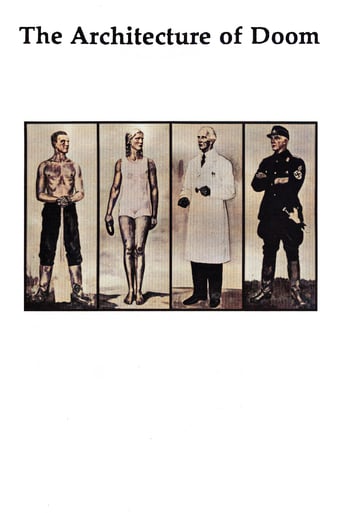

Save your money for something good and enjoyable
... View MoreGreat Film overall
... View MoreBest movie ever!
... View MoreI am only giving this movie a 1 for the great cast, though I can't imagine what any of them were thinking. This movie was horrible
... View MoreA documentary worthy of the work of Richard J Evans, looking in depth at the importance f art to the NSDAP regime and top Hitler's weltpolitik. However, I'm not clear as to why many reviewers have singled out Sam Gray's narration for particular derision. True, there are a couple of instances where his pronunciation is not perfect, such as Berchtesgaden, and referring to "the Grecian capital" seems strange, but then he's American and perhaps it's like others referring to Beijing as Peking; to each his own. One can also hear gasps of air and creaking of chairs, particularly when Hitler's Berghof chalet is described which seems a bit careless of the producer, and the sounds of birds chirping during Hitler's three hour tour of Paris are incongruous to say the least. However, Gray's narratives competent and judicious which is not surprising as he has played judges and doctors for so long on television: Judge Greenspan in The Sopranos, Judges Chabot and Leon in Law and Order, Dr. Hough in Equal Justice, Judge Weiss in the film Suspect, Dr. Henry Spivak in C.A.T. Squad, Judge Kaufman in Concealed Enemies, Judge Mineon in Rage of Angels, Dr. John Wolff in Hanky Panky and Dr. Bernstein in A Little Sex. Remark has also been made as to this monotone delivery but, again, I don't know how else he should speak- in the same excitable manner as that of the German propaganda films? www.tracesofevil.blogspot.com
... View MoreThe film approaches the Nazi period from a refreshing angle: the seldom-documented (in film) visions that informed official Nazi aesthetics, given priority by a host of top Nazis who, like their Fuehrer, were failed artists. It offered a number of insights, such as the role played by architectural sketches Hitler had made in his youth and the future propaganda value of gargantuan Greek-influenced architecture (e.g., Reich buildings were designed to decompose along the lines of Roman ruins so as to impress archaeologists centuries later).But the English narration by Sam Gray was so atrocious that it was difficult to separate it from the visual and conceptual qualities of the film itself. Imagine a Beethoven symphony where the strings are played without passion and several beats off from the other sections no reflection on the composer, but still hard to listen to. So great was the impact of the narration, in fact, that I expected to see ratings averaging 5 or 6 (my vote) on the IMDb site. Gray's uneven, indifferent inflection applied to a script he clearly (to judge by his mispronunciations) had not familiarized himself with gave the film an amateurish quality that it surely did not have in the original Swedish or the German versions. Moreover, the English translation, done by a German, was awkward in places.As tragic an oversight as the choice of the English narrator was, Peter Cohen and the producers ultimately retain responsibility for letting it pass, especially since Cohen had worked in English before. Any educated native English-speaker asked to review it would have cautioned them, after a single listening, not to underestimate how much the narration undermined its effectiveness. Engaging another narrator surely would not have broken the budget.Had I the choice, I'd see this film again with the Swedish or German narrations, subtitled in English.
... View MoreThis fast moving film postulates that the ideas that the Nazi hierarchy held about art influenced the drive to cleanse the race and make it pure. The Nazi's loved the classical ideal and hated anything that was impressionistic or modern and used it as proof of genetic impurity. The film recreates a lecture that toured Germany which showed how modern or degenerate art was based on deformed people. We see the images from the degenerate art and how they are compared to the mental and physically handicapped. This, the film argues, allowed the Nazis to then begin to sculpt the German people into the perfect physical being through murder (after all they are less then human).Its an interesting idea but I don't think it was as big a deal as the film makes it out to be. Certainly there was the drive to create the perfect little Nazi, but I don't think it was as formalized as the movie says. I think the nice ideas of art and race were less intertwined as this film thinks. That said this movie is kick in the pants and in the head. The ideas it puts forward were probably at the very least operating on a subconscious level as a form of positive re-enforcement. Its all very plausible, which is scary.Definitely worth seeing for anyone wanting to further color their understanding of Nazi ideas. You may not wholly agree with whats presented, but it will make you think, which isn't a bad thing.
... View MoreAn interesting idea (Nazism as an aesthetic movement) fairly convincingly presented, although sometimes it stretches to make a point (eg, the movie tries to make more of the use of Zyklon-B for pest as well as human extermination than the interesting coincidence it seems to be). The periodic sequences of similar looking Nazi art get boring after while, which is the point, but overmade. The narration is rather monotonous; it's possible that impression is the result of having to read it.
... View More